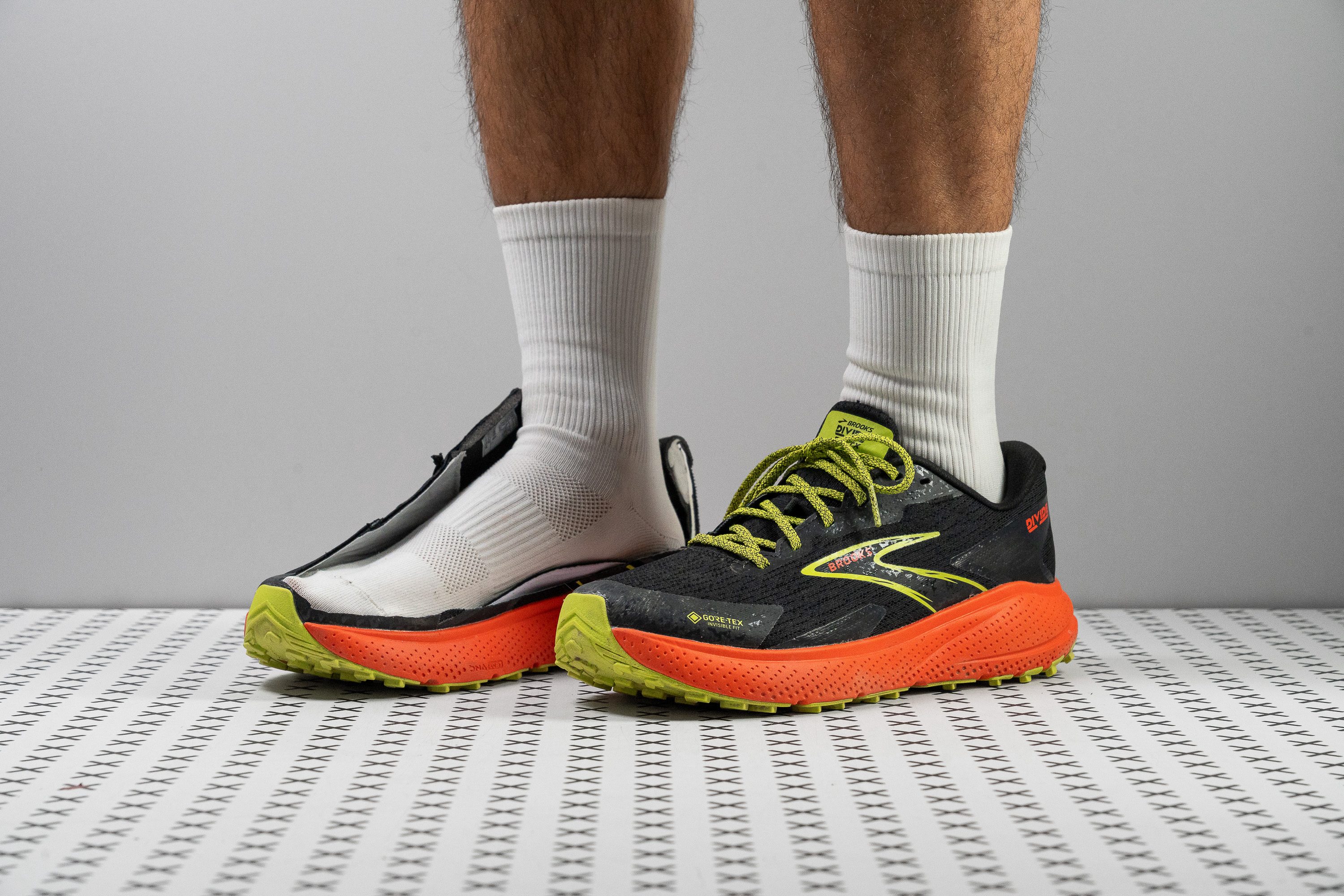Our verdict
Pros
- Waterproof Gore-Tex protection
- Stable ride
- Outstanding durability
- Better shock absorption than before
- Gravel-ready outsole
- Remains a strong value pick
- Comfortable upper
- Versatile
- Well executed tongue
Cons
- Limited toebox height
- Stiff underfoot feel
- GTX add-on price is too high
- Bad energy return
Audience verdict
Comparison
The most similar running shoes compared
+ + Add a shoe | |||||
|---|---|---|---|---|---|
| Audience score | 78 Decent! | 81 Good! | 75 Bad! | 76 Decent! | |
| Price | $140 | $170 | $130 | $170 | |
| Trail terrain | Light | ModerateTechnical | Light | Light | |
| Arch support | Neutral | Neutral | Neutral | Neutral | |
| Weight lab Weight brand | 10.1 oz / 286g 10.4 oz / 295g | 10.4 oz / 296g 10.7 oz / 303g | 10.3 oz / 293g 11.4 oz / 323g | 9.9 oz / 281g 10.6 oz / 300g | |
| Drop lab Drop brand | 10.0 mm 8.0 mm | 11.6 mm 6.0 mm | 10.2 mm 9.0 mm | 8.3 mm 9.5 mm | |
| Strike pattern | HeelMid/forefoot | Heel | Heel | HeelMid/forefoot | |
| Size | True to size | True to size | True to size | Slightly small | |
| Midsole softness | Balanced | Balanced | Firm | Soft | |
| Difference in midsole softness in cold | Normal | Small | Small | Normal | |
| Plate | ✗ | Rock plate | ✗ | ✗ | |
| Toebox durability | Good | Good | Very good | Decent | |
| Heel padding durability | Good | Bad | Good | Bad | |
| Outsole durability | Good | Decent | Good | Good | |
| Breathability | Warm | Warm | Warm | Warm | |
| Width / fit | Medium | Narrow | Wide | Medium | |
| Toebox width | Medium | Medium | Wide | Wide | |
| Stiffness | Moderate | Stiff | Stiff | Moderate | |
| Torsional rigidity | Stiff | Stiff | Stiff | Stiff | |
| Heel counter stiffness | Stiff | Stiff | Moderate | Flexible | |
| Lug depth | 3.0 mm | 4.4 mm | 2.7 mm | 3.6 mm | |
| Heel stack lab Heel stack brand | 35.5 mm 24.0 mm | 37.3 mm 39.0 mm | 34.5 mm 35.0 mm | 32.1 mm 37.0 mm | |
| Forefoot lab Forefoot brand | 25.5 mm 16.0 mm | 25.7 mm 33.0 mm | 24.3 mm 26.0 mm | 23.8 mm 27.5 mm | |
| Widths available | Normal | Normal | Normal | NarrowNormal | |
| Season | Winter | Winter | Winter | Winter | |
| Removable insole | ✓ | ✓ | ✓ | ✓ | |
| Orthotic friendly | ✓ | ✓ | ✓ | ✓ | |
| Waterproofing | Waterproof | Waterproof | Waterproof | Waterproof | |
| Ranking | #320 Bottom 13% | #296 Bottom 19% | #348 Bottom 5% | #344 Bottom 6% | |
| Popularity | #299 Bottom 18% | #255 Bottom 30% | #167 Top 46% | #102 Top 28% |
Who should buy
The Brooks Divide 5 GTX is a good pick for:
- Anyone who wants a waterproof shoe for daily use that, based on our testing, handles many surfaces well, including easy trails.
- Runners in cold and wet climates who need a dependable option for gravel runs during bad-weather days.
- Budget-minded heel strikers looking for a winter-ready shoe that we discovered to be versatile and affordable.
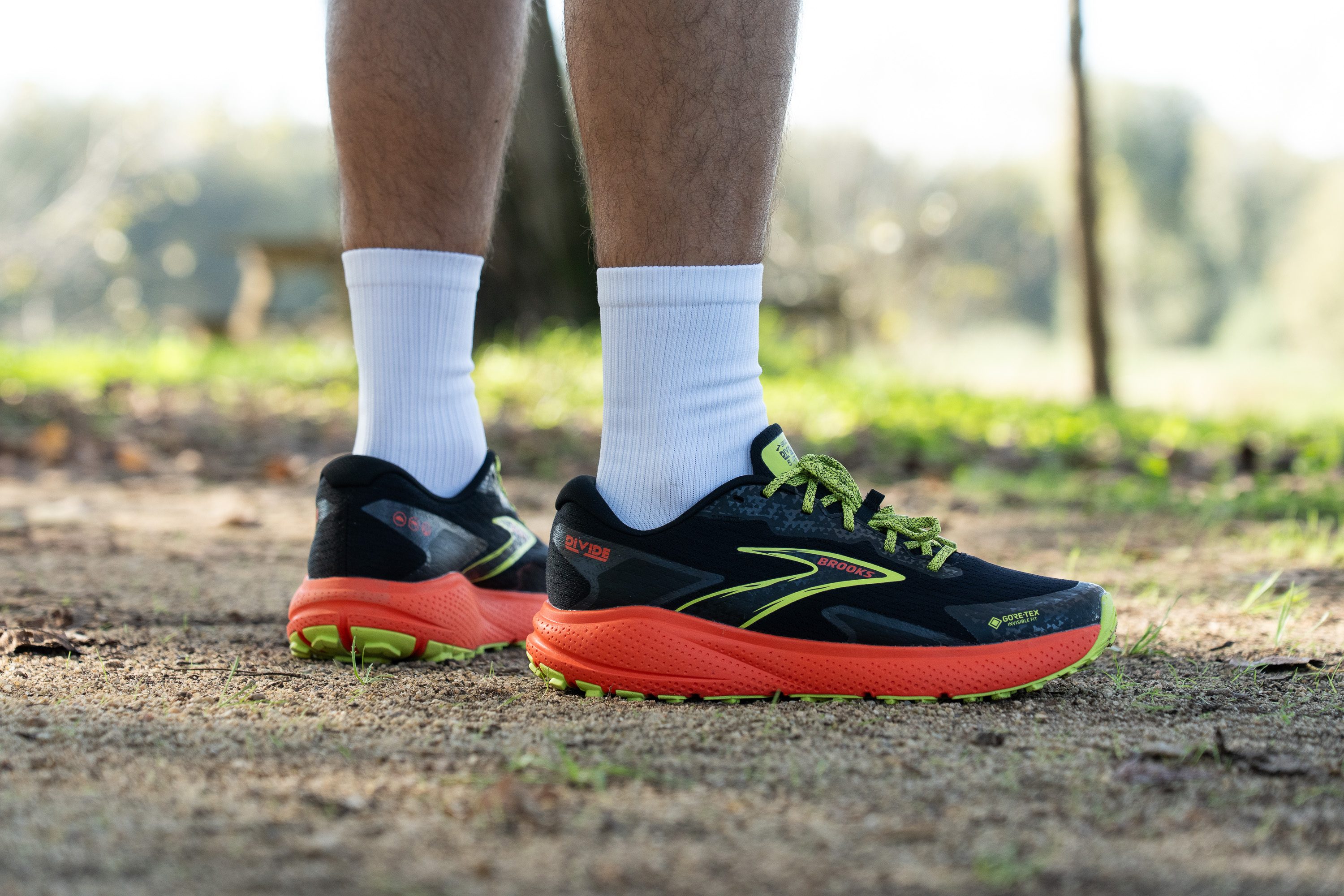
Who should NOT buy
We believe that the Brooks Divide 5 GTX isn’t the best option if you want a true trail-focused experience. In our view, its road-inspired build fall short on tougher terrain. We think shoes like the Altra Timp 5 GTX or the HOKA Speedgoat 6 GTX offer a more trail-ready ride with better all-terrain confidence.
The opposite issue can also appear: if you enjoy the Divide’s road-friendly upper but don’t really need trail lugs, we do not recommend choosing this model. We believe the Nike Pegasus 41 GTX or Nike Winflo 11 GTX deliver a more balanced setup for wet conditions on asphalt or concrete.

Cushioning
Shock absorption
The Divide 5 GTX delivers moderate shock absorption, measuring 119 SA in the heel and 96 SA in the forefoot. These values aren’t high, but they provide enough protection for regular trail use and only fall short when aiming for ultra-distance comfort.
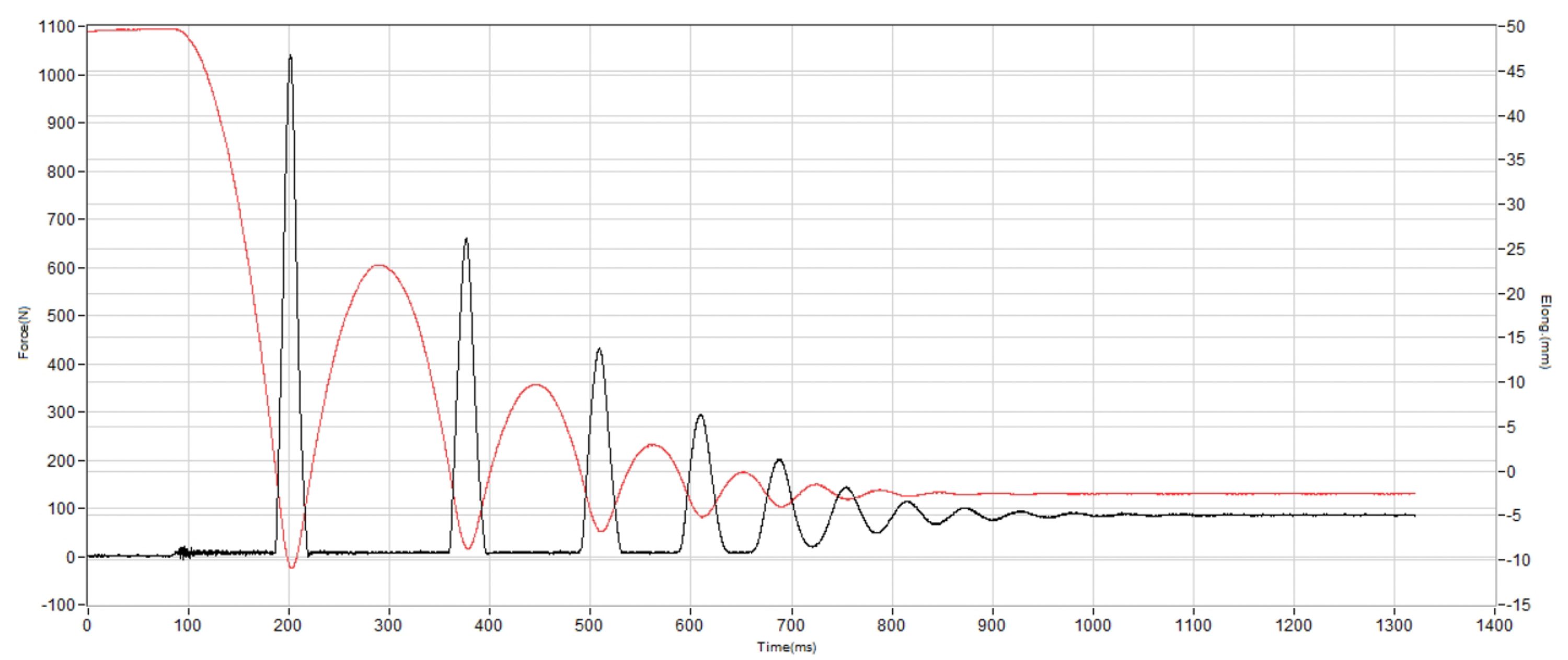
| Divide 5 GTX | 119 SA |
| Average | 122 SA |
Energy return
Don't expect much bounce from the Divide 5 GTX, because it simply isn’t there. After we tested it with the ASTM F1976 method, we found 47.9% energy return in the heel and 52.7% in the forefoot, which sits clearly below average.
These numbers confirmed what we discovered on our runs: the DNA Loft v2 foam feels flat rather than lively.
| Divide 5 GTX | 47.9% |
| Average | 55.6% |
Heel stack
With 35.5 mm of heel stack, there’s a solid amount of DNA Loft v2, and the shoe clearly grows compared to the Divide 4, which had 32.1 mm in the same spot.
We tested both models and weren’t shocked by this change. It matches the trend of shoes getting taller each year, and Brooks is simply adjusting the design to meet what many runners look for now.

| Divide 5 GTX | 35.5 mm |
| Average | 32.6 mm |
Forefoot stack
The forefoot rises from 22.9 mm to 25.5 mm in this version, creating a clear change underfoot for runners who land toward the front. And from our perspective, while the heel update stands out, this forefoot boost felt even more necessary for the Divide.

| Divide 5 GTX | 25.5 mm |
| Average | 25.1 mm |
Drop
We measured an exact 10.0 mm heel-to-toe drop in the Divide 5 GTX, which makes perfect sense for an entry-level daily trainer even with a trail-focused outsole. And since Brooks often leans toward higher-drop designs, this result fits their usual approach.

| Divide 5 GTX | 10.0 mm |
| Average | 7.6 mm |
Midsole softness
The DNA Loft v2 foam is an EVA-based compound that’s cost-effective and doesn’t offer much bounce, and we discovered that runners hoping for a softer ride in the Divide will still feel the firm character from earlier versions.
We tested the foam at 22.0 HA with our durometer, which sits around average, but remember that this shoe has more rubber underfoot being a trail design, so it feels firmer than a similar midsole on a road shoe.
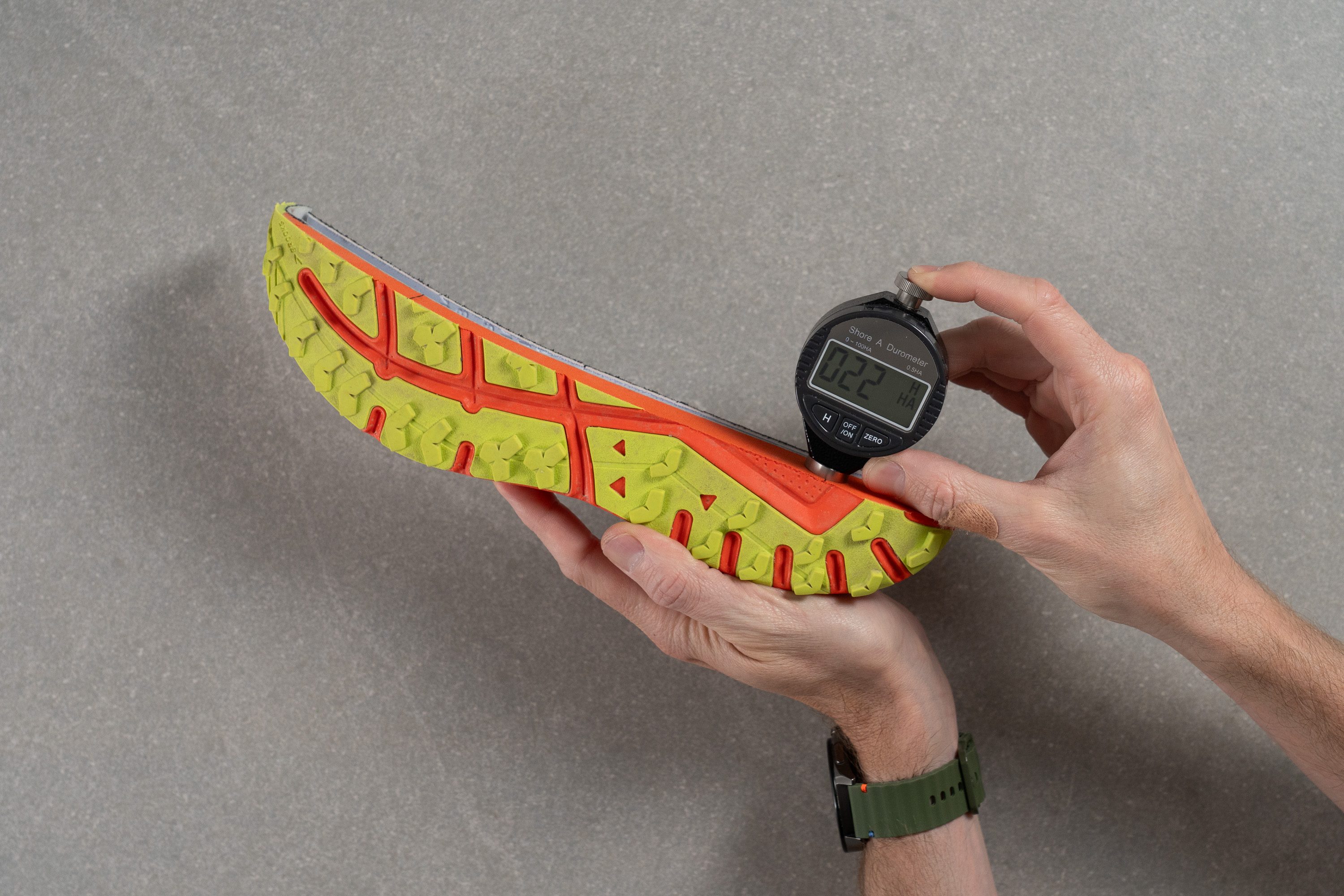
| Divide 5 GTX | 22.0 HA |
| Average | 21.9 HA |
Rocker
The Divide 5 GTX sits on a classic, moderate rocker that feels natural underfoot. The stack isn’t tall enough to create an aggressive roll, but the high drop help with smooth transitions. This shape works very well for walking and hiking, which are very common use cases for this shoe.
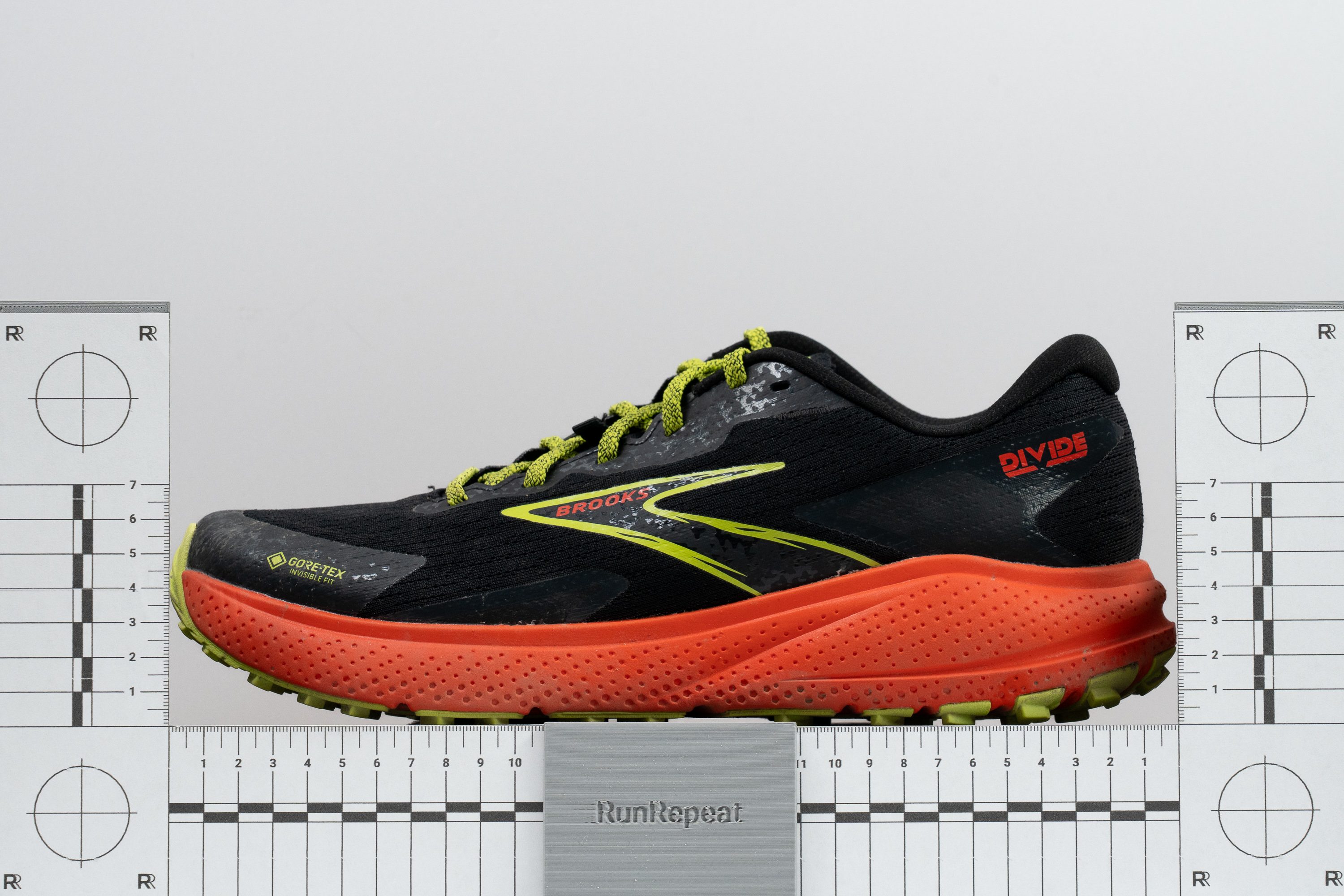
Size and fit
Size
Brooks Divide 5 GTX fits true to size (22 votes).
Width / Fit
The Brooks Divide 5 GTX felt pretty average when we first tested it, neither snug nor roomy.
To get exact numbers, we created a precise gel mold of the interior, and our caliper reading for the widest part of the fit reached 96.2 mm.

| Divide 5 GTX | 96.2 mm |
| Average | 95.6 mm |
Toebox width
The second measurement helps us understand the toebox shape and how much toe splay you can expect. At 73.9 mm, it should work fine for most runners, though it doesn’t offer the wide, open feel you’d get from an Altra shoe.

| Divide 5 GTX | 73.9 mm |
| Average | 74.6 mm |
Toebox height
We found a more noticeable limitation in toebox height.
Our gel mold measured 24.8 mm, which sits clearly below the average and could feel a bit tight for some runners.

| Divide 5 GTX | 24.8 mm |
| Average | 27.0 mm |
Traction / Grip
Forefoot traction
The Brooks Divide 5 GTX doesn’t use a special wet-surface rubber, relying instead on the regular TrailTack Green found in other Brooks trail shoes. Because of that, grip was decent but not outstanding, returning a 0.49 score in our traction test.
| Divide 5 GTX | 0.49 |
| Average | 0.60 |
Lug depth
The Divide 5 GTX is built as a gravel-ready, door-to-trail option with shallow 3.0 mm lugs that handle easy paths with confidence while staying smooth on the occasional road section.

| Divide 5 GTX | 3.0 mm |
| Average | 3.5 mm |
Outsole design
The Divide 5 GTX outsole looks essentially like a road pattern that has been adapted for light trails. The wide flex grooves running through the forefoot and midfoot keep the shoe somewhat flexible, which helps for hiking. It’s clearly tuned for easy terrain where you want a bit more grip than a road shoe without losing that familiar road-like feel.
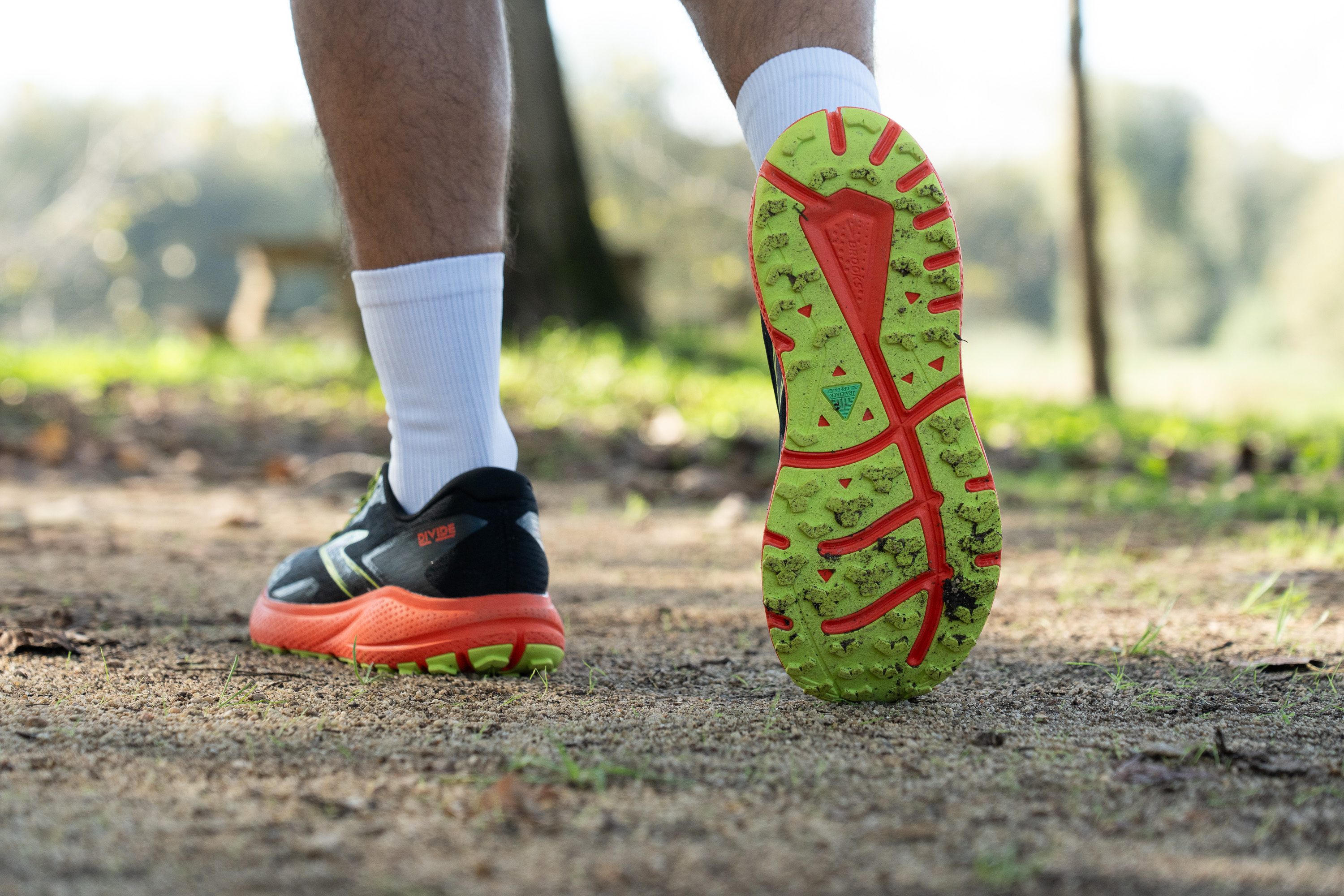
Flexibility / Stiffness
Most waterproof running shoes feel slightly stiffer because of the added Gore-Tex membrane, and the Divide 5 GTX follows that pattern. Even with the outsole cutouts we discovered earlier, it still lands on the stiffer side in our test at 16.6N.
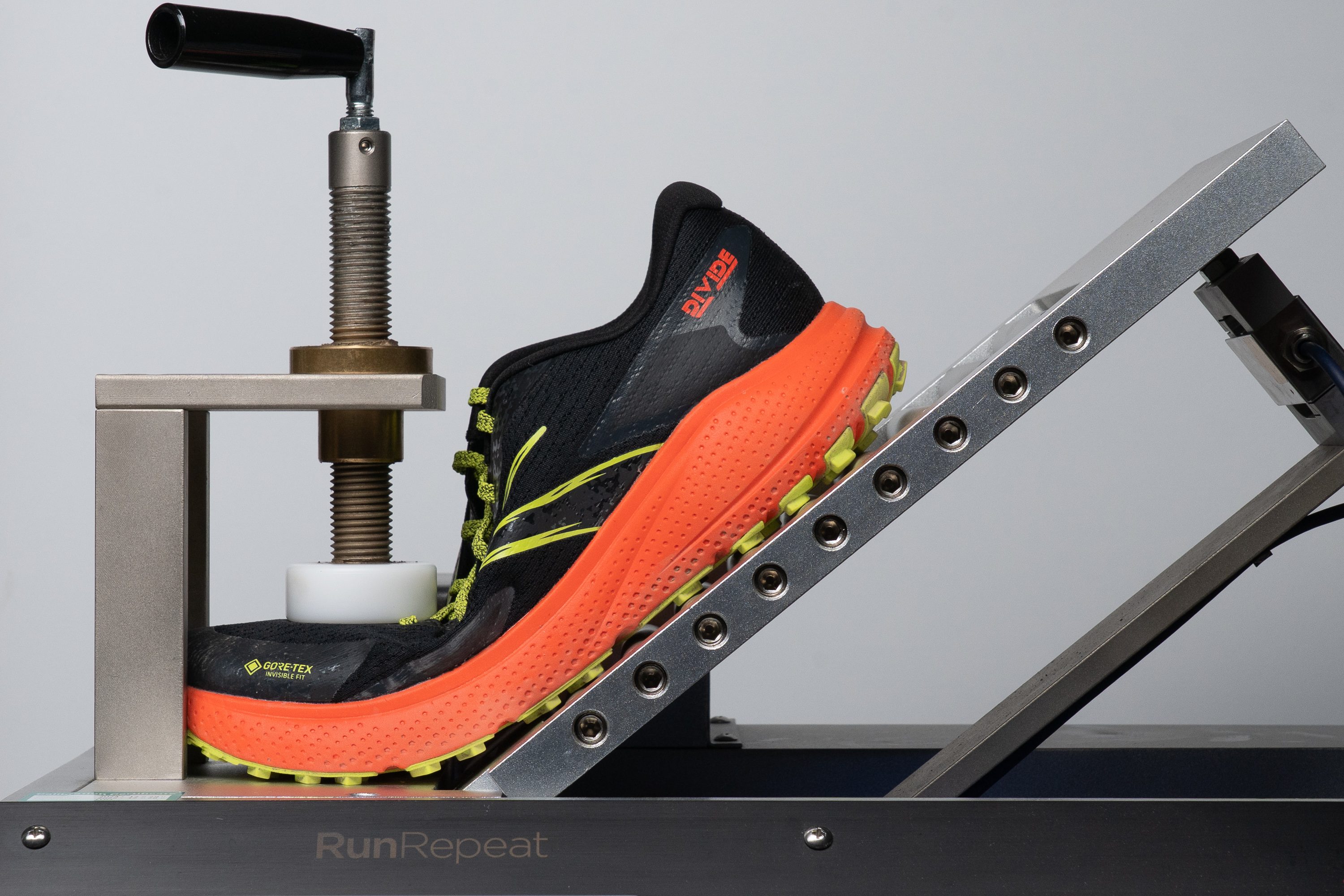
| Divide 5 GTX | 16.6N |
| Average | 14.6N |
Weight
The Brooks Divide 5 GTX offers a reasonable weight for a waterproof trail shoe at a moderate price point. At 10.1 oz or 286g, it feels perfectly acceptable on foot, and we really have no complaints.
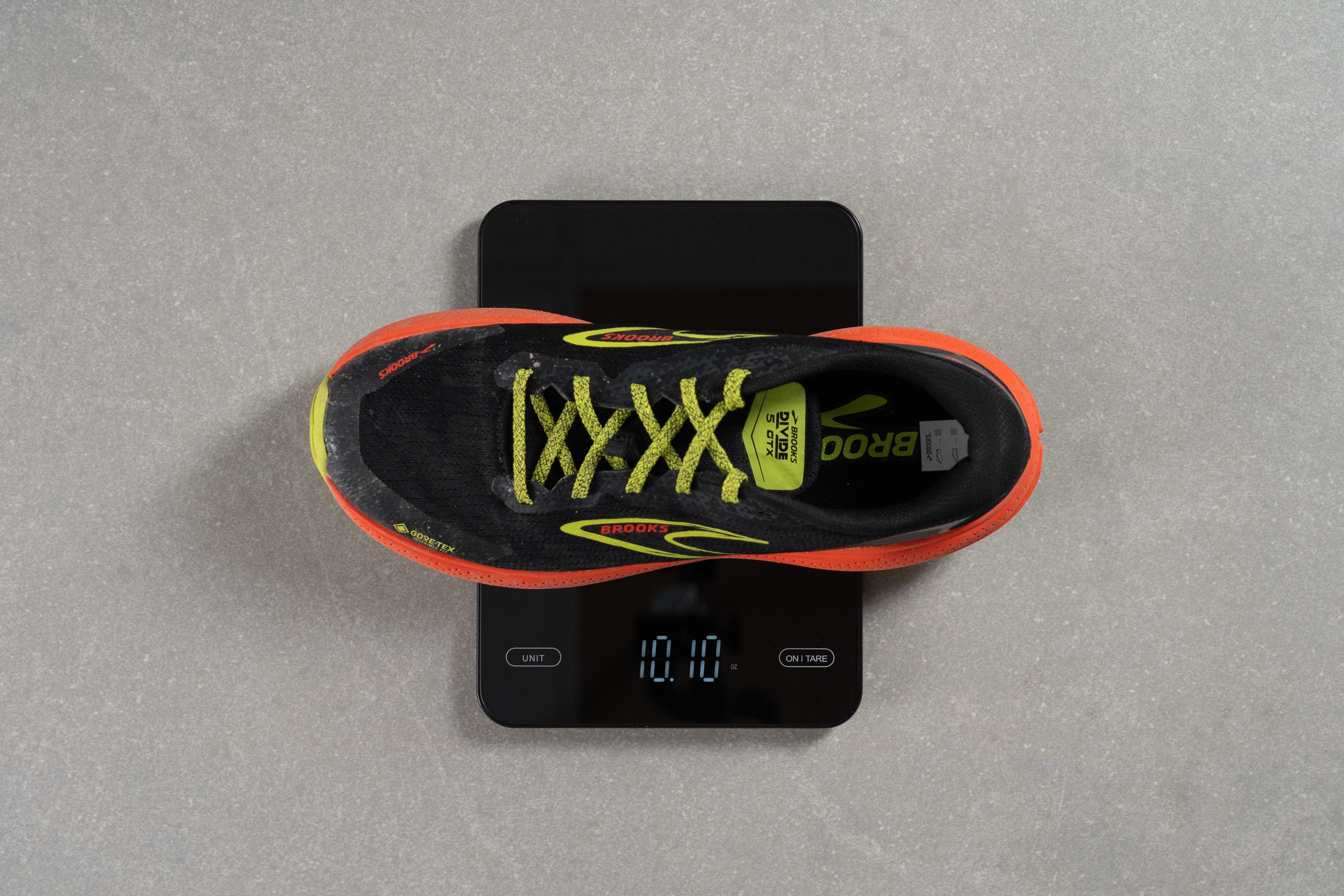
| Divide 5 GTX | 10.1 oz (286g) |
| Average | 10.2 oz (289g) |
Breathability
Gore-Tex is designed to keep water out while allowing a bit of internal moisture to escape, giving the Divide 5 GTX dependable protection in wet weather.
Based on our lab testing, though, airflow is almost fully blocked, and we rated it 1/5. In our experience, this is common with waterproof membranes.
In the light test, the toebox showed zero transmission. Breathability clearly takes a back seat, which makes sense for a shoe built for cold and wet conditions, and it’s not an issue for us.

Our microscope work confirmed this tight seal, as we struggled to spot any openings.
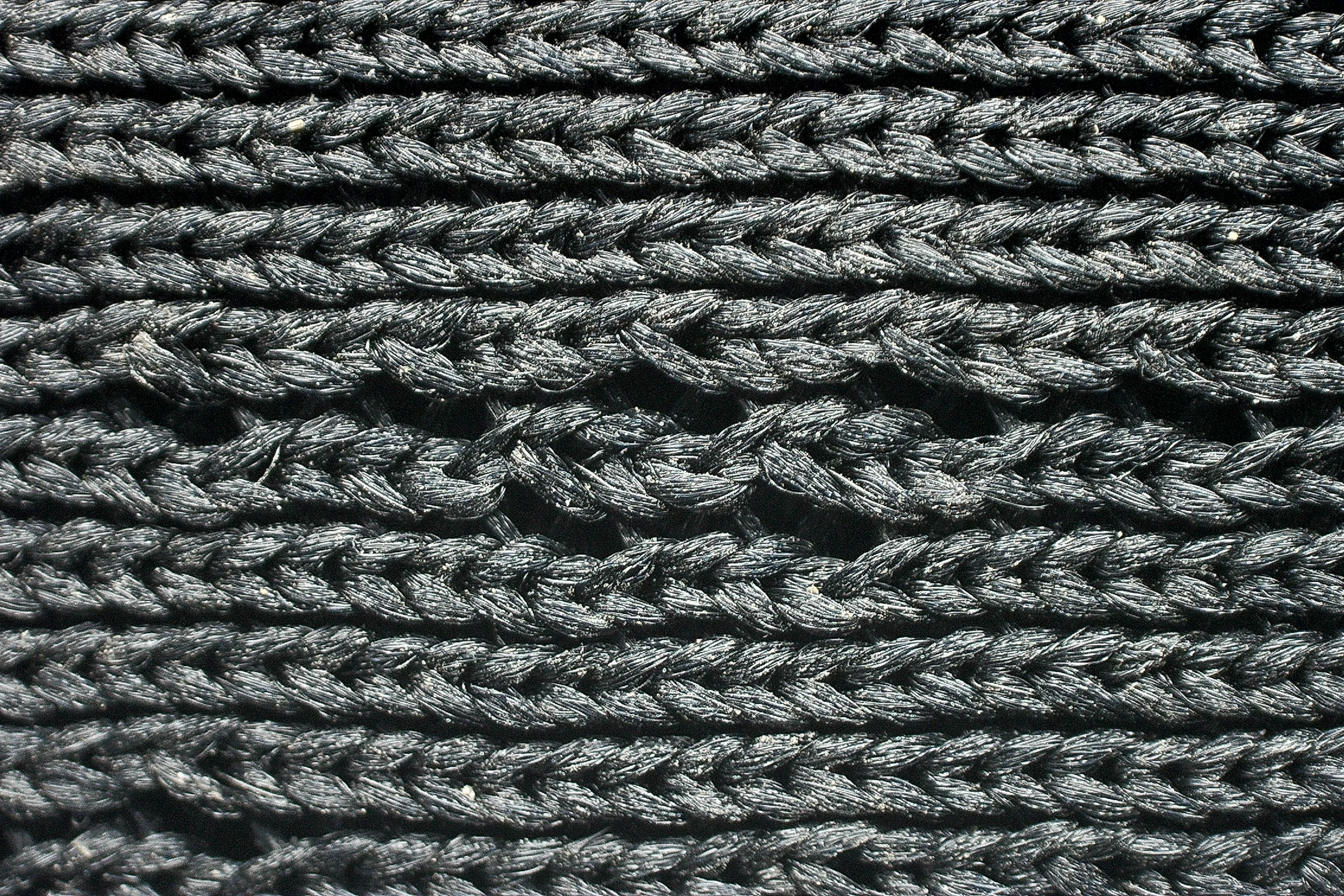
Brooks also added a sturdy toe bumper for impact protection, and a generous amount of foam in the heel to boost comfort on daily trail use.
| Divide 5 GTX | 1 |
| Average | 3.2 |
Stability
Lateral stability test
One of the most surprising strengths of the Divide series is its strong stability. The firmer foam, broad midsole, and high rigidity make the shoe feel close to a true stability model at times, and we found it performs even better now.
Torsional rigidity
A 5/5 in torsional rigidity adds a clear stability boost, but it also creates a less natural underfoot feel. Some runners may find this uncomfortable, especially if they plan to use the shoe for hiking or daily wear.
| Divide 5 GTX | 5 |
| Average | 3.6 |
Heel counter stiffness
The heel counter also feels firm at 4/5, adding extra support for heel strikers. Most runners won’t find it uncomfortable, since Brooks added plenty of foam in the area to offset any pressure.
| Divide 5 GTX | 4 |
| Average | 3 |
Midsole width - forefoot
This is the widest Divide so far in both the heel and forefoot, and you can really feel that extra platform underfoot. Our first measurement in the forefoot came in at 117.3 mm.

| Divide 5 GTX | 117.3 mm |
| Average | 112.8 mm |
Midsole width - heel
The heel is the part that truly stands out at 98.6 mm.
This width may feel excessive for some, and a slightly narrower design would still work well for walking and hiking. However, extreme heel strikers will appreciate the added stability this setup provides.

| Divide 5 GTX | 98.6 mm |
| Average | 89.8 mm |
Durability
Toebox durability
We pushed the toebox through our durability check by running the Dremel at 5K RPM with a 2N load. The final score landed at a strong 4/5, showing it handles abrasion better than many competitors.
| Divide 5 GTX | 4 |
| Average | 3.1 |
Heel padding durability
We also measured a solid 4/5 in the heel padding using the same test, reinforcing durability as one of the Divide 5 GTX’s strengths while we waited to see how the outsole would perform.
| Divide 5 GTX | 4 |
| Average | 3 |
Outsole durability
The outsole held up incredibly well. After using the Dremel and measuring the rubber loss, we discovered only 0.6 mm was gone. That’s an outstanding result and rounds out a truly impressive durability trio.
| Divide 5 GTX | 0.6 mm |
| Average | 0.9 mm |
Outsole thickness
The outsole uses 2.0 mm of rubber, which is enough to shield the foot from the ground and protect it from the usual hazards you find on dirt roads and similar terrain.
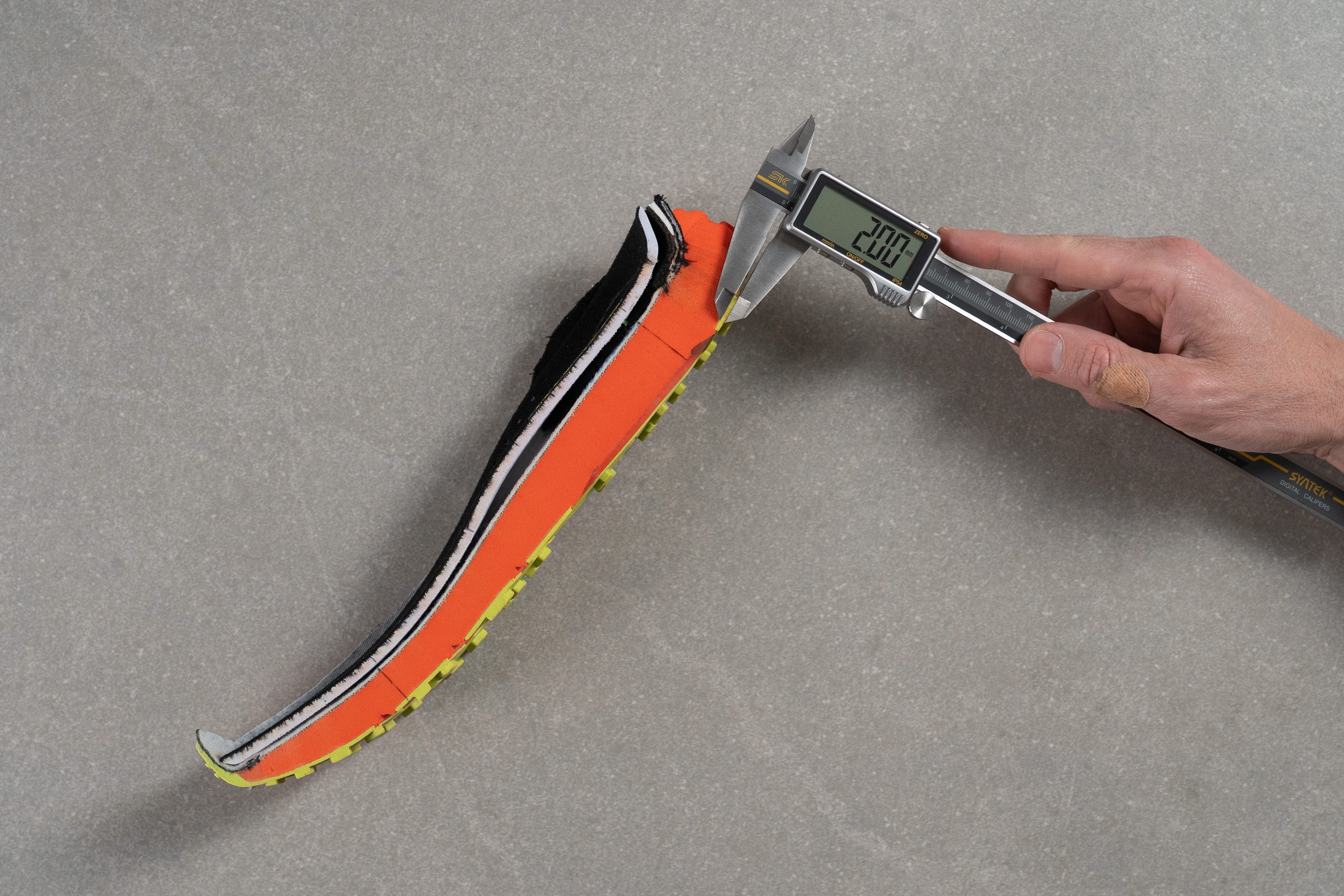
| Divide 5 GTX | 2.0 mm |
| Average | 2.2 mm |
Misc
Insole thickness
The insole comes with a slightly thicker 5.0 mm design, adding a touch of extra comfort to the overall cushioning setup.
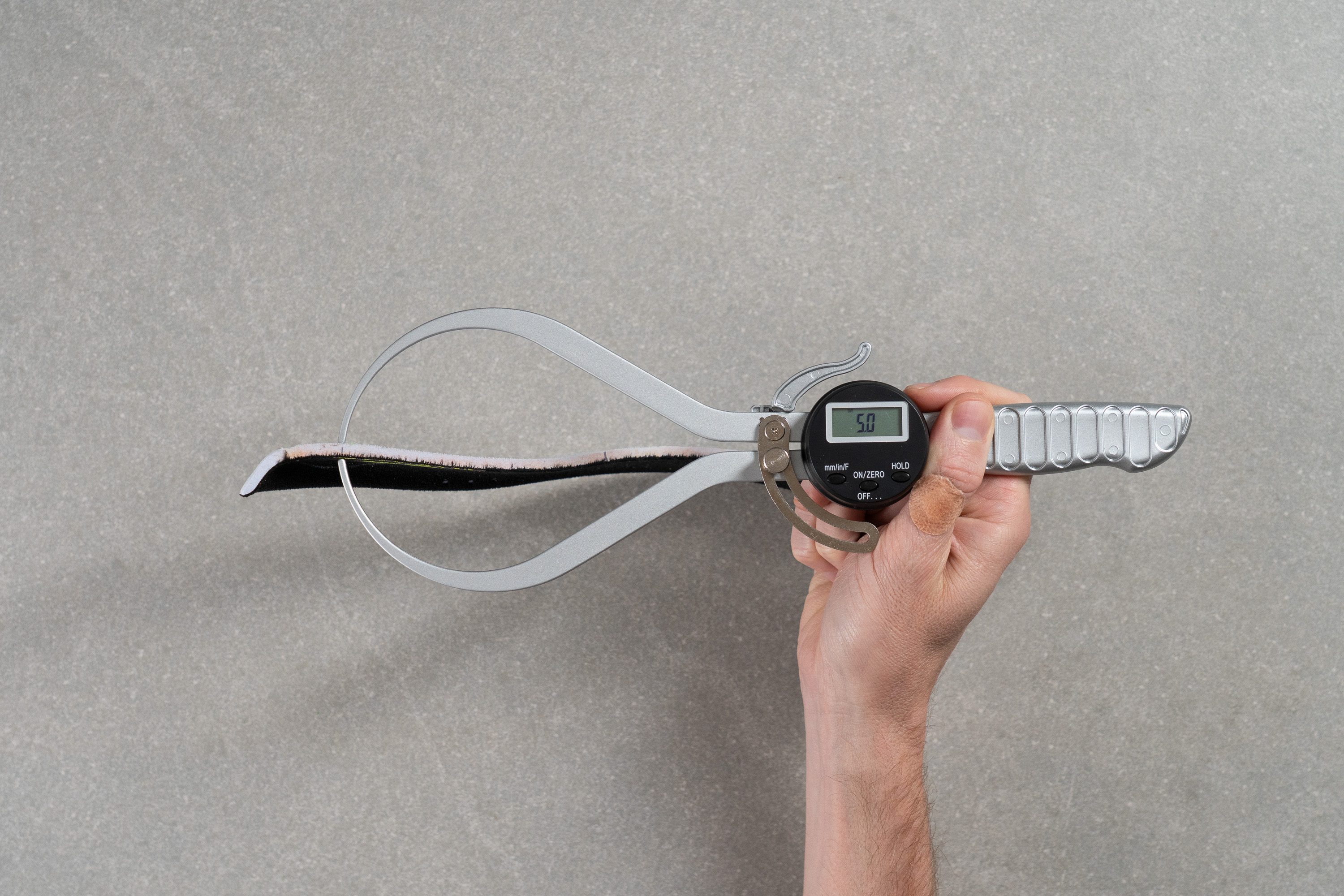
| Divide 5 GTX | 5.0 mm |
| Average | 4.7 mm |
Removable insole
The Divide 5 GTX includes a removable insole, but taking it out means losing the airflow provided by its perforations. This is not common at all in an entry-level shoe!
| Divide 5 GTX | Yes |
Midsole softness in cold (%)
The Divide 5 GTX became noticeably firmer after 20 minutes in our freezer, showing a 39% increase in hardness.
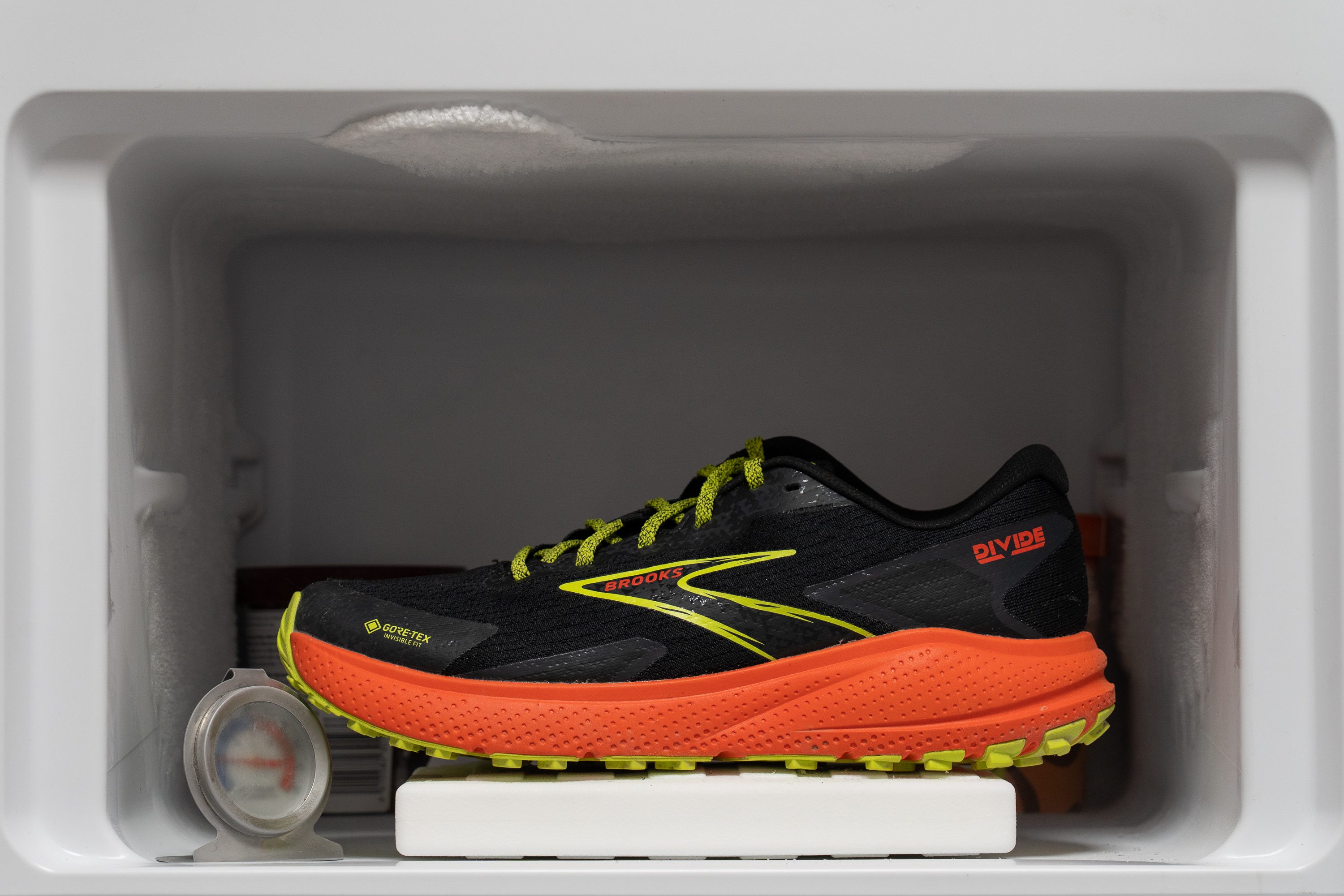
| Divide 5 GTX | 39% |
| Average | 26% |
Reflective elements
It’s surprising that Brooks didn’t add any reflective elements here, especially in a shoe meant for bad weather and low-visibility conditions where extra safety would clearly help.
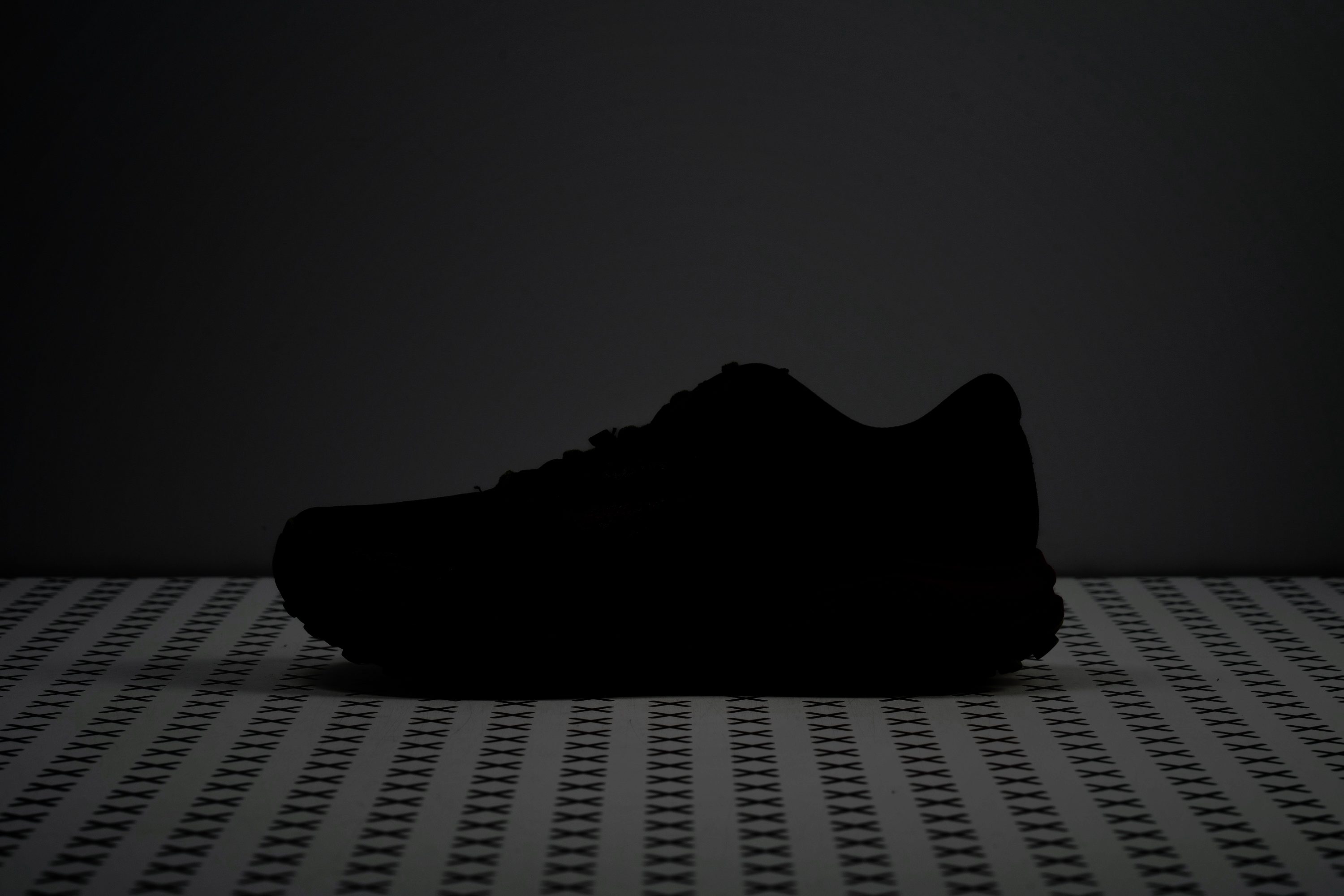
| Divide 5 GTX | No |
Tongue padding
Starting with the tongue, Brooks included a helpful loop that keeps the laces secure and avoids unwanted shifting, and we also appreciated the trail-styled laces.

The tongue itself has 5.3 mm of padding, offering a smart balance of comfort and practicality. It’s cushioned enough for daily runs or commuting while avoiding the extra weight and bulk found in heavier designs.

| Divide 5 GTX | 5.3 mm |
| Average | 6.4 mm |
Tongue: gusset type
While it’s something we can overlook in many trail shoes, a fully gusseted tongue is a must in any Gore-Tex model to keep the interior sealed. The Divide 5 GTX delivers exactly that.

| Divide 5 GTX | Both sides (full) |
Price
One of the main attractions of the Divide series is its very competitive price, which has always appealed to beginners and budget-minded runners. The Gore-Tex version raises the cost noticeably, making it less appealing for tight budgets, but it still stands as one of the best value-for-money waterproof options available.
| Divide 5 GTX | $140 |
| Average | $152 |
Heel tab
The Brooks Divide line has traditionally paired a road-style upper with a trail-focused midsole, and its heel design follows the look of other Brooks road shoes, which means it doesn’t include a heel tab.

| Divide 5 GTX | None |

